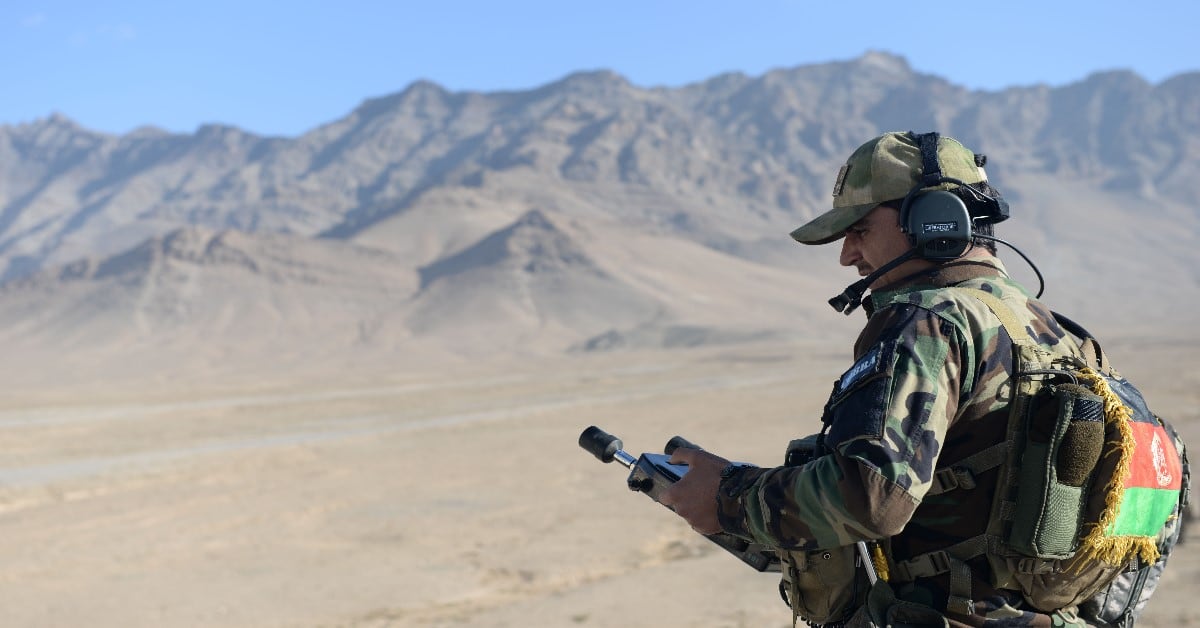On April 2, at roughly noon, Afghan air force helicopters shot multiple rockets and heavy machine-guns at an open-air religious ceremony in Kunduz province. The attack killed 36 and injured another 71 Afghans, investigators with the United Nations mission to Afghanistan said in a report this summer.
The UN report on the incident determined 30 of the dead were children.
The incident highlights one of the major problems facing the Afghan air force, which has made significant technological strides in the three years since it received strike aircraft but still garners headlines that showcase possible negligence on the part of Afghan pilots.
According to the Afghan government, the airstrike was intended to target senior Taliban leaders, as well as members of the Taliban’s “Red Unit,” which the government alleges were gathering for an operation against Kunduz city.
NATO’s Resolute Support mission to Afghanistan doesn’t participate in combat operations, but it does continue to take up the mantle of training Afghan government forces.
“While our advisers are not directly involved with Afghan combat employment, they continue to assist in the development of doctrine that guides that process,” a public affairs official with Resolute Support’s Train, Advise, Assist Command-Air said in an email.
RELATED

“In an effort to avoid CIVCAS [civilian casualties], the Afghans continuously work to positively identify targets, conduct pattern of life assessments to ensure non-combatants are not present, and estimate collateral damage risks levels," the public affairs official said. "Additionally, [Afghan] pilots are empowered to call-off strikes based on their immediate assessment of the battlefield. Approximately, 1 in 5 missions are canceled by pilots due to CIVCAS concerns.”
The Afghan air force’s rapid increase in strike capability appears to have simultaneously driven up the rate of collateral damage.
A July report by the UN mission documented 149 civilian deaths and 204 wounded from air operations in Afghanistan in the first six months of 2018. That’s a 52 percent increase from the same period in 2017, according to the report.
Still, the UN report shows that air operations only result in 7 percent of the total civilian causalities in the country, most of which occur from suicide attacks and non-suicide improvised explosive devices.
“Of particular concern, women and children continued to comprise more than half of all aerial attack civilian casualties and the number of child casualties from these attacks increased by 64 percent compared to the first half of 2017,” the report reads.

The Afghan air force has only had an attack plane — the A-29 Super Tucano light-attack aircraft — for about two years. In that time, the fleet of pilots have started dropping laser-guided bombs, and regularly plan and implement their own missions without NATO advisers, TAAC-Air officials previously told Air Force Times.
Afghan air force MD-530 Cayuse Warriors, a small but lethal attack helicopter, conduct the majority of strikes in-country, however, said Lt. Col. Justin Williams, the 438th Air Expeditionary Advisory Squadron commander, in June.
“[MD-530s] are employed more often, and they strike more often to defend people in crisis, whereas the A-29 is more of a strategic asset striking specific targets,” he said.
RELATED

Those MD-530s were what struck the religious ceremony in Kunduz on April 2, according to the UN mission.
The TAAC-Air public affairs official said in the email that an increase in available platforms will help the Afghan air force perform more effective intelligence, surveillance and reconnaissance in support of their fleet of attack assets.
As part of a modernization program, Afghan officials plan to triple the size of the air force over the next five years. The country’s fleet of aircraft will be bolstered by 159 UH-60 Black Hawk helicopters, some of which will be fixed-forward firing, as well as new AC-208 reconnaissance aircraft.
“This will enhance the [Afghan air force’s] ability to determine civilian activity from that of combatants and provide more reliable, near real-time information to pilots both prior to and during mission execution,” the public affairs official said. “Additionally, the recent introduction of the laser-guided bombs has given pilots the ability to strike with extreme precision. The continual use of this capability is intended to help give commanders the desired effect on the battlefield while limiting civilian casualties.”
Kyle Rempfer was an editor and reporter who has covered combat operations, criminal cases, foreign military assistance and training accidents. Before entering journalism, Kyle served in U.S. Air Force Special Tactics and deployed in 2014 to Paktika Province, Afghanistan, and Baghdad, Iraq.




